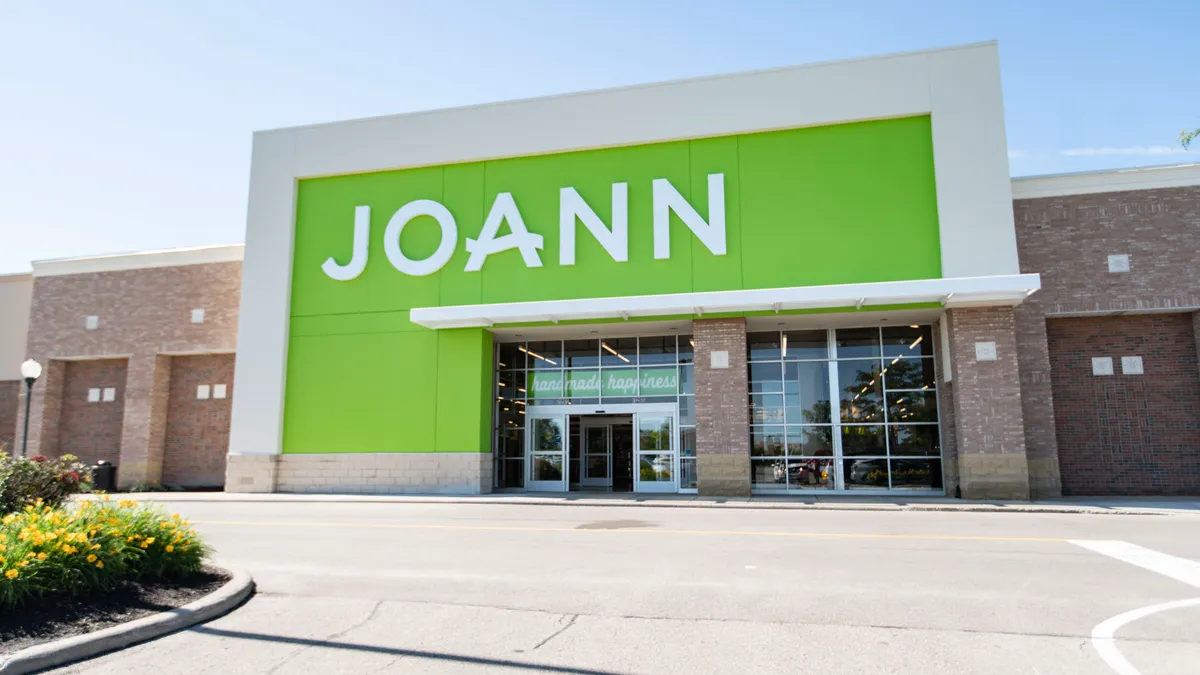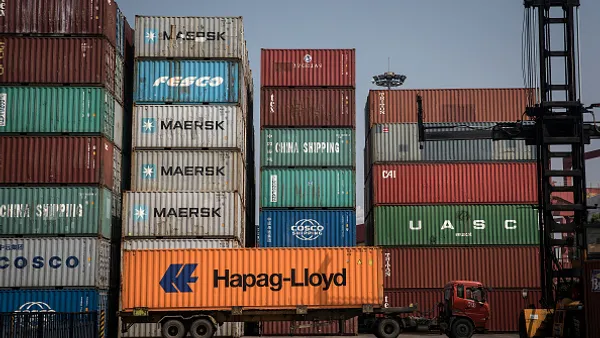Dive Brief:
- Joann expects to complete its financial restructuring and emerge from bankruptcy “in the coming days,” the craft and sewing retailer said in a Thursday announcement. Upon exiting bankruptcy, Joann will be a privately held company owned by its creditors.
- Under the plan approved by U.S. Bankruptcy Court Judge Craig Goldblatt in Delaware, Joann’s creditors agreed to cancel nearly $505 million of the company’s nearly $1.1 billion in long-term debt.
- After filing for Chapter 11 on March 18, Joann says it kept all of its 815 stores open and retained the jobs of its more than 18,000 employees during bankruptcy with a $132 million commitment from its financial stakeholders.
Dive Insight:
Joann’s bankruptcy exit plan will allow the company to emerge from Chapter 11 with a significantly deleveraged capital structure and to obtain long-term liquidity without affecting the business’s unsecured creditors, Chief Financial Officer Scott Sekella said in court documents.
The company cut jobs and sought to cut $225 million in supply chain, product and corporate costs last year. It also did a sale-leaseback of its Ohio corporate headquarters and restructured its field and corporate operations. But ultimately, those actions weren’t enough to avoid bankruptcy.
Sekella, who is also serving as co-lead of the company’s interim office of the CEO with Chief Customer Officer Chris DiTullio, noted that 100% of the company’s creditors supported the restructuring.
“We are pleased to have reached this significant milestone less than 40 days after initiating our court-supervised process,” DiTullio said in a statement. As a result of the deal, “Joann will move forward with a strengthened financial foundation, allowing us to invest in customer experience enhancements, our best-in-class product assortments, and our more than 18,000 team members nationwide.”
Founded about 80 years ago, 96% of Joann’s retail stores were profitable when it filed for bankruptcy.
Interest in the company’s primary merchandise offering of crafting, sewing and fabric offerings surged during the pandemic’s height. But as inflation rose and consumer discretionary spending sank in recent years, the company’s long-term debt load swelled to an unsustainable level while its liquidity declined. The retailer generated about $2.2 billion in net sales in fiscal year 2023.
However, in a blog post published shortly after Joann’s Chapter 11 filing, analytics company Placer.ai said its data indicates that the retailer “is a strong contender for a post-bankruptcy comeback” based on positive year-over-year foot traffic trends.
“The unique nature of Joann’s products give the company’s brick-and-mortar stores an advantage over digital counterparts: Crafters like to get a feel for the material before purchasing, and amateur DIY-ers who visit physical stores can consult with expert salespeople to receive guidance for ongoing projects,” Placer.ai’s Shira Petrack said in March.
Although Joann’s foot traffic has declined since the height of the pandemic, Placer.ai said 2023’s year-over-year visit growth indicates the brand still serves sewers and knitters who want to shop in person.
Joann's main rival, Michaels, has been making moves of its own while Joann is in court. The retailer announced earlier this month that it lowered prices on over 5,000 products across categories. In March, Michaels also said it planned to expand the assortment and distribution of fabric it'll offer in stores, one of Joann’s key offerings. S&P Global Ratings recently upgraded Michaels' credit rating to B- from CCC+, citing improvements to the company's operating margin and cash generation.
“With a strengthened balance sheet and improved liquidity, we are better positioned to work collaboratively with our vendors, business partners and landlords, and ultimately to inspire the creativity in our customers that helps them find their happy place,” Joann’s Sekella said.














